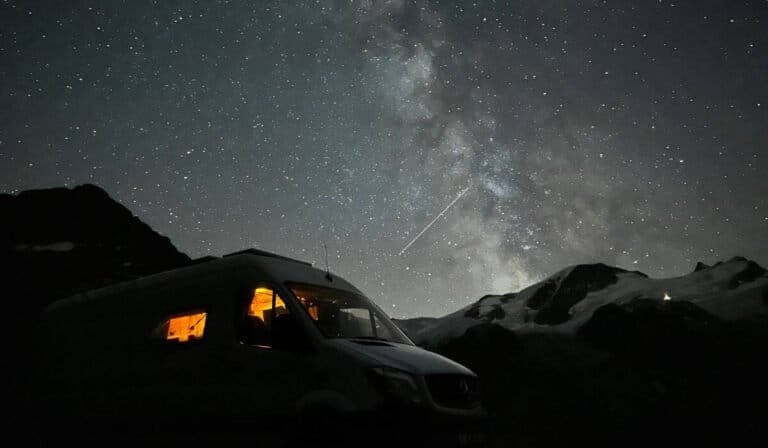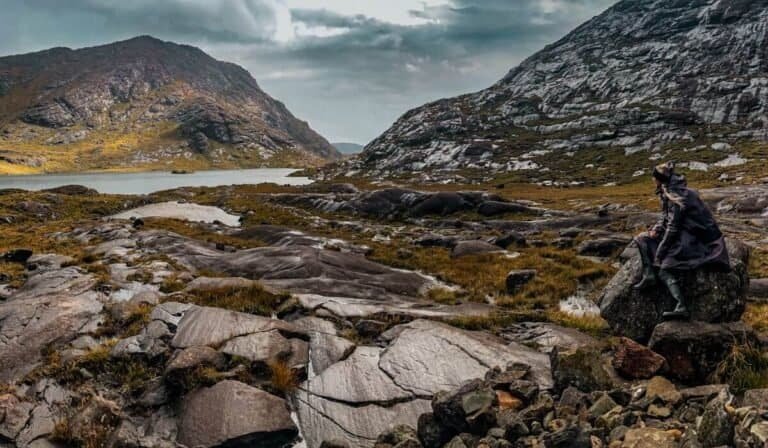
Wondering What Winter In Australia Is Like?
We’ve got all the expert local knowledge you need!
After living in Australia for 18 months and spending a ski season in Mount Buller, Victoria, I have experienced the warm and cold locations of winter in Australia.
Overview: Winter In Australia
Does Australia even experience winter? While this continent is renowned for its golden beaches and sizzling summers, winter here is a hidden treasure waiting to be explored. So, grab your warmest coat, indulge in a steaming cup of hot chocolate, and prepare to immerse yourself in a winter wonderland like no other.
Winter in Australia offers many unique experiences and attractions that will leave you spellbound. If you’re seeking snowy adventures, head south to the Snowy Mountains in New South Wales or the Victorian Alps.
Here, you’ll find glistening ski slopes, snow-capped peaks, and cosy alpine villages that beckon with roaring fires and après-ski indulgences. Strap on your skis or snowboard, carve your way down powdery slopes and let the adrenaline fuel your winter escapades.
For those yearning for something offbeat, venture north to Queensland’s Tropical North or the Kimberley region in Western Australia. Escape the winter chill by delving into lush rainforests, where cascading waterfalls plunge into emerald pools.
Immerse yourself in ancient Aboriginal culture, marvel at breathtaking gorges, and take a dip in natural hot springs nestled amidst rugged landscapes. These hidden gems offer a unique blend of warmth, adventure, and tranquillity.
If you’re looking for a country where you can live vanlife in warm climates all year round, then Australia is the destination for you. Winter has many climates in the vast landscape of Australia.
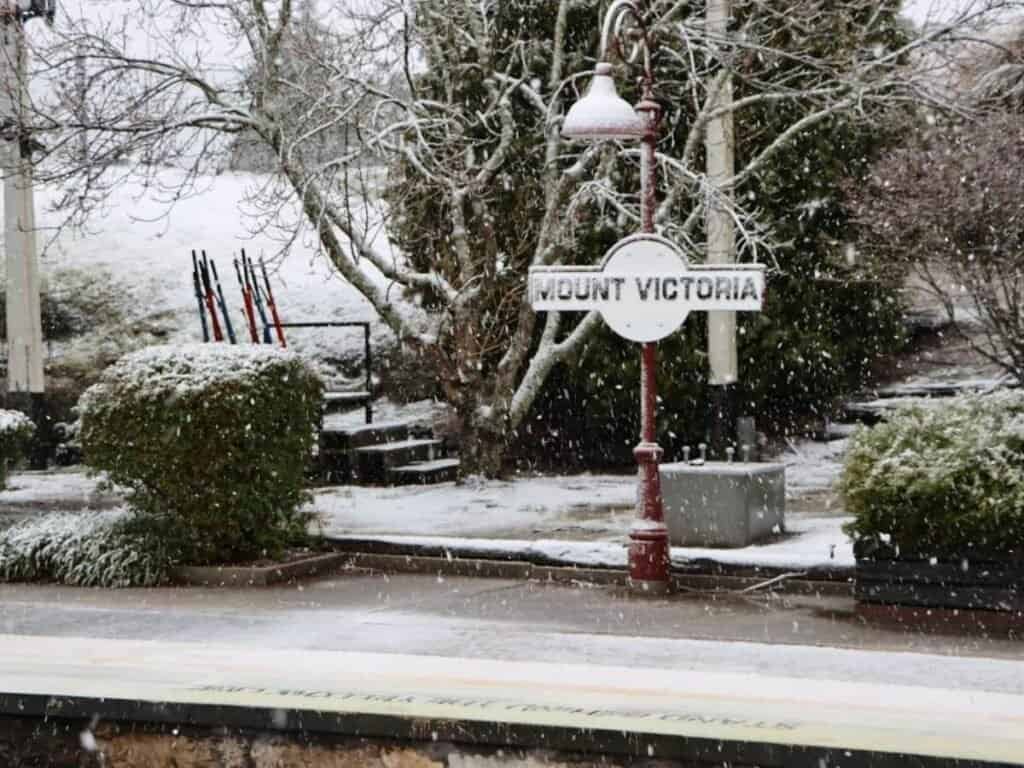
19 Unique Winter Activities In Australia
If you’re looking for experiences that you won’t find anywhere else or things to do in Australia during winter, here are our 19 unique winter activities in Australia:
- Skiing The Australian Alps
- Trekking In Tasmania
- Uluru Magic
- Aboriginal Cultural Immersion
- Penguin Parade On Phillip Island
- Road Tripping
- Whale Watching
- Christmas In July
- Chase The Southern Lights
- Vivid Sydney
- Hot Springs in Mornington Peninsula
- Daintree Rainforest Adventure
- Dark Mofo Festival in Tasmania
- Wine Tasting
- Kakadu National Park
- Crocodile Cruise in Darwin
- Dolphin Watching in Glenelg
- Wildflower Season in Perth
- Scuba Diving at the Great Barrier Reef
Let’s dive into more detailed information on each activity below!
Booking Your Holiday?
Use our favourite travel resources to save on your next trip:
🛎 Book your hotel using Booking.com
✈️ Save a huge amount on flights with Faredrop
⛰ Book your activities and guides using Viator
🚙 Save on car rental with Discover Cars
note: While Discover Cars have the best deals, their ratings can be off, double check your hire company in Google to be sure of the best deal with the best company.
While many flock to well-known winter destinations, Australia’s lesser-known winter activities hold their own allure. For unique things to do -journey to Tasmania, the island state known for its rugged wilderness and captivating charm. Explore Cradle Mountain-Lake St Clair National Park, where snow-dusted peaks reflect in pristine alpine lakes. Traverse through wild landscapes, encounter native wildlife, and experience the magic of untouched nature.
If you’re seeking a cultural winter escape, Adelaide in South Australia is the place to be. Don’t miss the Adelaide Festival, a vibrant celebration of art, music, and performance that takes place during the winter months. Immerse yourself in captivating theatre productions, revel in eclectic music performances, and indulge in delectable gourmet delights at the city’s renowned food and wine festivals.
1. Skiing the Australian Alps
Who needs Europe when you’ve got the Australian Alps? With popular resorts like Perisher and Thredbo, you can carve your mark on the slopes while enjoying some top-notch hot chocolate.
While Australian skiing might not be famous for snow quality or quantity, it still provides a distinctive skiing and snowboarding experience. In total, Australia offers 284 kilometers of slopes served by 142 ski lifts.
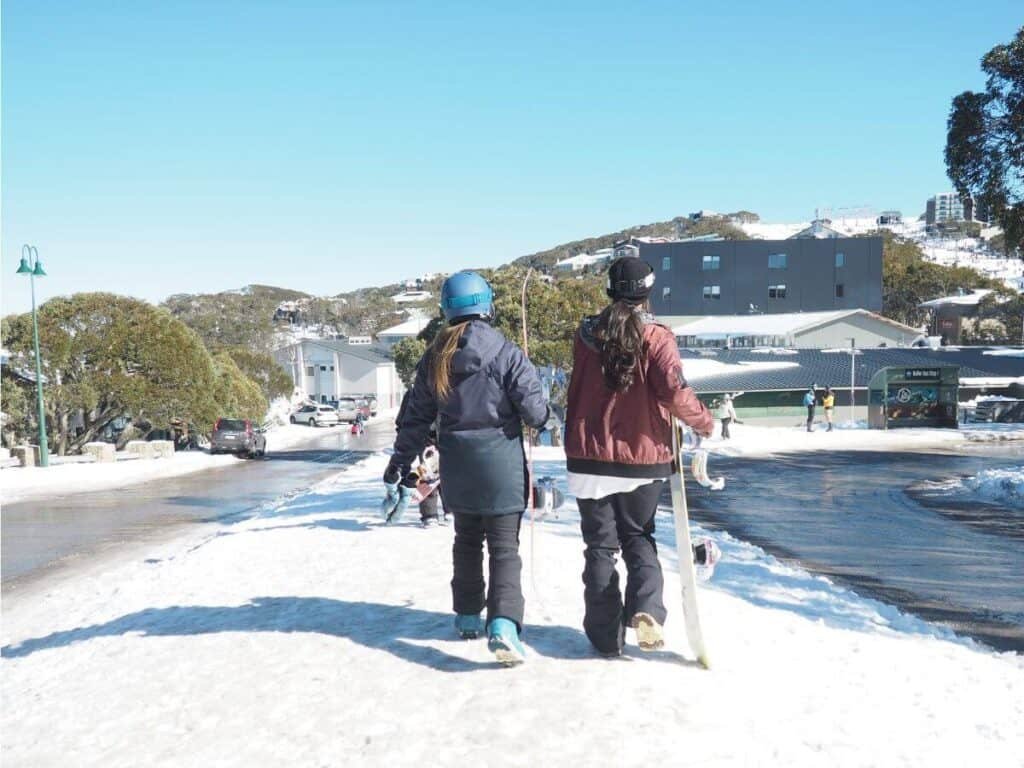
2. Trekking in Tasmania
This small island state turns into a hiker’s paradise in winter, with stunning trails across Cradle Mountain and Freycinet National Park. Hiking in Tasmania is one of the most unique things to do in Australia in winter.
One of the highlights of Tasmania’s South is the Hartz Mountains National Park. Here, you can enjoy an easy trek along a wooden boardwalk to Lake Esperance, a glacier-formed tarn. Another popular destination is the Overland Track within Cradle Mountain National Park, where you can enjoy a snowshoeing trek.
3. Uluru Magic
Uluru, also known as Ayers Rock, is a massive sandstone monolith located in the southern part of the Northern Territory in central Australia. It stands 348 meters high and has a total circumference of about 9.4 kilometers. Uluru is notable for appearing to change colour at different times of the day and year, particularly at dawn and sunset when it can glow red or orange.
The iconic Uluru becomes even more mesmerising in winter, with cooler temperatures making it a perfect time to visit. There’s no place in the world like Uluru, this is a truly unique Australian winter activity.
Uluru is sacred to the Pitjantjatjara Anangu, the Aboriginal people of the area. The area around the formation is home to an abundance of springs, waterholes, rock caves, and ancient paintings, which are significant to the local indigenous culture.
In 1987, Uluru-Kata Tjuta National Park was listed as a UNESCO World Heritage Site for both its natural and cultural values. The park covers an area of 1,326 square kilometers and includes both Uluru and the Kata Tjuta rock formations.
As of October 26, 2019, climbing Uluru is officially banned out of respect for the site’s cultural significance to the Anangu people.
4. Aboriginal Cultural Immersion
Aboriginal cultural immersion experiences in Australia offer an opportunity to delve deep into Australia’s rich Indigenous heritage. These immersive journeys provide a unique perspective on the country’s history and culture, from the Dreamtime stories passed down through generations, to the traditional practices still observed today.
Use this opportunity to learn about Australia’s rich indigenous heritage. Join guided tours, participate in traditional ceremonies, and get your hands dirty with some bush tucker. By far one of the best things to do in Australia in winter.
5. Penguin Parade on Phillip Island
One of the most famous winter activities in Australia is the Penguin Parade on Phillip Island. It is home to one of the largest Little Penguin colonies in the world and is located only 90 minutes away from Melbourne.
Watch these adorable little fellas waddle their way home at dusk. It’s like watching a live version of Happy Feet!
Every sunset, visitors watch as these little guys cross the beach, returning from their day at sea to their burrows in the dunes. This natural spectacle is known as the Penguin Parade.
The General Viewing stands overlook Summerland Beach and offer tiered seating and boardwalks with restricted capacity to allow plenty of space. Guided ranger tours are available for those looking for a more immersive experience.
6. Road Tripping
Road tripping in Australia offers a unique way to experience the diverse landscapes and vibrant cultures of this vast continent. From coastal drives to outback adventures, road trips can take you through some of the most breathtaking scenery Australia has to offer.
One of the most popular road trips is the Great Ocean Road from Melbourne to Warrnambool. Known as Victoria’s most hyped route, it features surf towns, the famous Twelve Apostles, and stunning ocean views.
The East Coast drive from Cairns to Brisbane is another favoured route. It takes you along the coast, providing opportunities to explore the tropical city of Cairns, the wilds of Cape Tribulation, and the Great Barrier Reef.
For those seeking a longer journey, the National Highway 1 offers an epic countrywide trip. This route takes you around the entire Australian mainland, passing through every state capital.
Another adventurous itinerary is the southern coast road trip from Perth to Melbourne. This journey includes the beautiful beaches of Western Australia, the vineyards of South Australia, and the rugged coastline of Victoria.
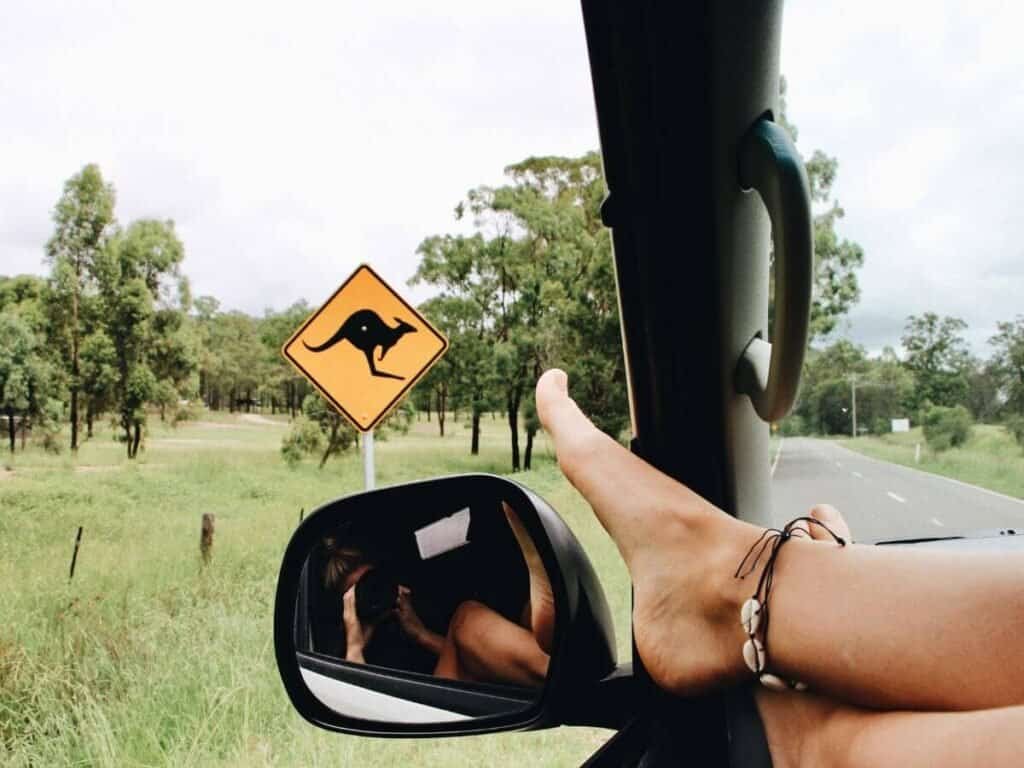
7. Whale Watching
Winter is prime whale-watching season in Australia. Winter coincides with the migration of several whale species. The peak time for whale watching varies across different parts of the country, but generally, May to November is when most whales are present in Australian waters.
During this period, you can spot southern right whales journeying to the temperate breeding waters off South Australia and Victoria. On the East Coast, locations offer front-row seats for winter whale watching.
In Hervey Bay, whales can be spotted from May to November, but July and August are the peak time. This is a magical winter activity in Australia.
8. Christmas in July
Christmas in July, also known as Yulefest or Yuletide, is a unique tradition celebrated by Australians during the country’s winter season. It does not replace the traditional Christmas celebration on December 25th, but rather serves as an additional festive event.
The reason for this celebration is simple: July marks the middle of winter in Australia, and the cooler temperatures lend themselves to all the traditional Christmas festivities that are typically associated with a winter setting. This includes activities such as roasting chestnuts, drinking mulled wine, and enjoying a hearty Christmas dinner.
9. Chase the Southern Lights
The Southern Lights, also known as the Aurora Australis, is an atmospheric phenomenon that creates stunning light shows in the southern hemisphere. The best places to see the Southern Lights in Australia are generally in the southernmost parts of the country, particularly on the island of Tasmania.
In Tasmania, locations like Mount Nelson Signal Station, Bruny & Satellite Islands, Hobart, and Cradle Mountain-Lake St Clair National Park are renowned for their Southern Lights sightings. These locations provide unobstructed views facing south, which are ideal for catching a glimpse of the aurora.
Philip Island, a two-hour drive from Melbourne, is another great spot for trying to see the Aurora Australis. The island has several natural areas where light pollution is minimal, enhancing your chances of seeing the lights.
The optimal time to see the Southern Lights is when the night sky is at its darkest. Midnight is often suggested as the best time, as the sun is on the opposite side of the Earth.
However, it’s important to note that the visibility of the Southern Lights can be unpredictable and depends on various factors such as solar activity, weather conditions, and the absence of light pollution. Therefore, while these places offer good chances, sightings are never guaranteed.
Before setting off on your Aurora Australis adventure, it is recommended to check the Aurora forecast and local weather conditions to increase your chances of witnessing this spectacular natural event.
10. Vivid Sydney
This annual festival is a great winter activity that transforms Sydney into a spectacular canvas of light, music, and ideas.
Vivid Sydney is the world’s largest festival of light, music, and ideas. It’s an annual event, which transforms the city into a wonderland of light art sculptures, innovative installations, and grand-scale projections.
Visitors can enjoy immersive light installations and projections, live music performances, thought-provoking industry forums, and a range of food and beverage offerings.
One of the highlights of Vivid Sydney is the mesmerizing lighting shows across the waterfront of Sydney, with the iconic Sydney Opera House often being the centerpiece of these illuminations.
In addition, Vivid Sydney also includes a program of creative industry workshops and seminars, and a music program that spans contemporary and classical music.
Vivid Sydney invites visitors to step into a playground of the unexpected filled with creativity and innovation. It’s a unique experience that offers something for everyone, whether you’re interested in art, music, technology, or just want to see Sydney in a different light.
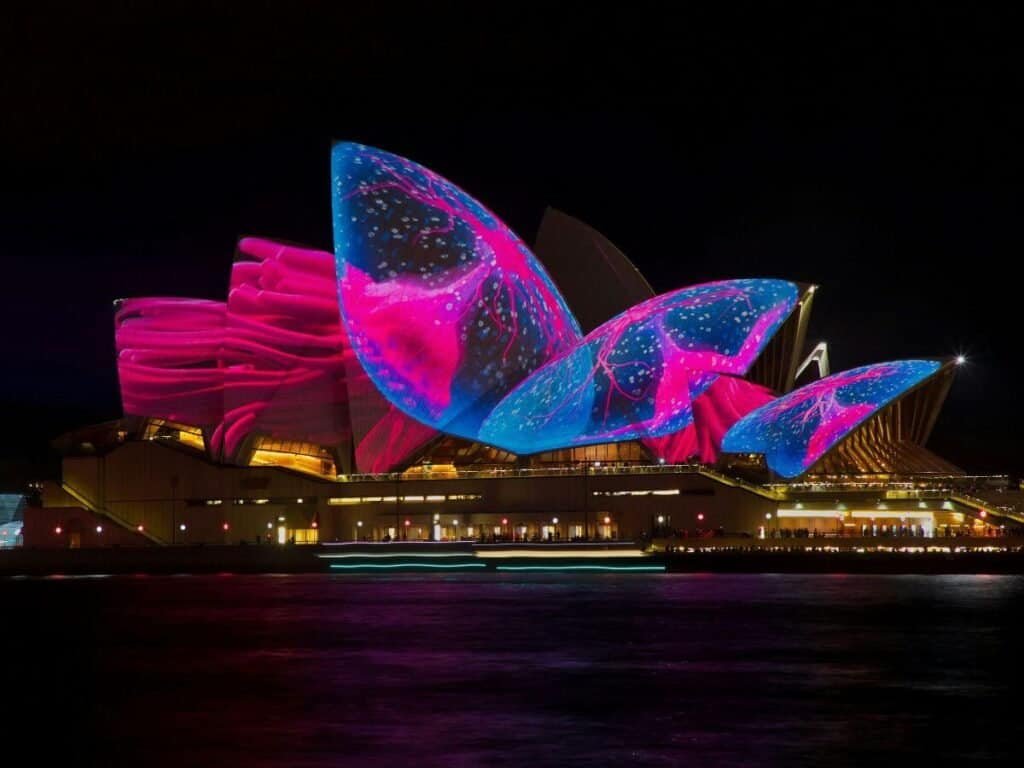
11. Hot Springs in Mornington Peninsula
Nothing beats a relaxing soak in natural hot springs. A unique thing to do in Australia in winter is to head to Mornington Peninsula for a rejuvenating experience amidst nature.
The Mornington Peninsula, located just 90 minutes from Melbourne, is home to several natural geothermal mineral springs and day spas. These have become popular wellness destinations for those seeking relaxation and rejuvenation.
The most well-known of these is the Peninsula Hot Springs. This award-winning destination offers over 70 globally inspired bathing experiences, including thermal mineral pools, cold plunge pools, a Turkish steam bath (Hamam), a sauna, massaging bamboo showers, and more. They also have a hilltop pool that offers stunning 360-degree views of the Mornington Peninsula.
In addition to the hot springs, the Peninsula Hot Springs also features a day spa where visitors can enjoy a variety of treatments, such as massages, facials, and body wraps.
12. Daintree Rainforest Adventure
Swap the cold for tropical warmth in the ancient Daintree Rainforest. Spot unique wildlife, explore lush greenery, and take refreshing dips in crystal-clear waterholes.
The Daintree Rainforest, located in tropical North Queensland, Australia, offers a variety of adventures for nature lovers and thrill-seekers alike.
One of the popular ways to explore the rainforest is through guided tours. For instance, Daintree Tours offers a journey through the ancient rainforests, showcasing some of its most remarkable highlights. Another option is the Daintree Rainforest Discovery Centre, which provides an interactive experience with a variety of informative displays about the rainforest’s biodiversity.
For those seeking more physical adventures, Cairns Adventure Group offers activities like rafting, tubing, diving, and swimming. You can also explore the rainforest and Cape Tribulation through various modes such as 2-wheels, 4-wheels, or even on foot.
A must-visit spot is Cape Tribulation, where you can embark on a 1-day tour that includes exploring the Daintree Rainforest and Mossman Gorge. This tour is a fantastic opportunity to discover one of Australia’s most-loved natural treasures.
Another highlight is the Mount Alexandra lookout, offering stunning views over the lush rainforest, mangrove-fringed river mouth, and the ocean. The Jindalba visitor area is also worth visiting, providing an immersive experience of the rainforest.
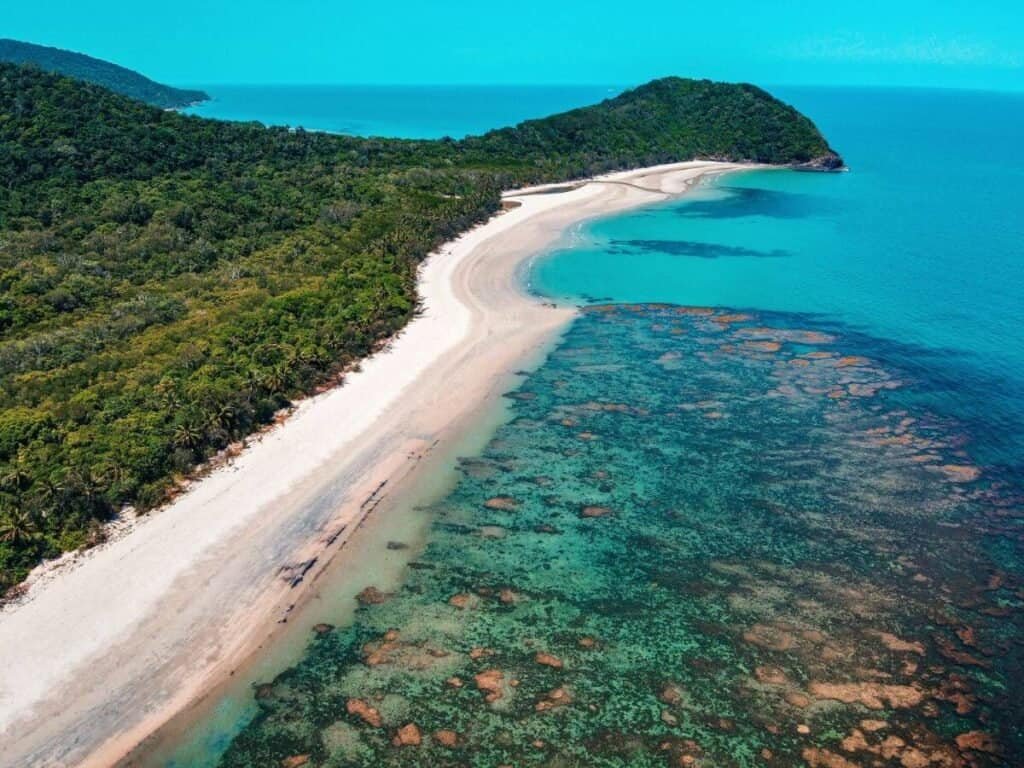
13. Dark Mofo Festival in Tasmania
Dark Mofo is an annual mid-winter arts and culture festival held in Hobart, Tasmania, by the Museum of Old and New Art (MONA). Launched in 2013, Dark Mofo is known for its provocative and boundary-pushing programming.
Dark Mofo celebrates dark and ancient pagan rituals, with attendees often participating in unique and immersive experiences. It presents a variety of events, including art installations, live music, performances, and food and drink offerings.
One of the highlights of the festival is the Winter Feast, a large-scale public banquet that offers a range of Tasmanian food and drink.
14. Wine Tasting
Wine tasting in Australia during winter offers a unique and cosy experience for wine lovers. Here are some of the top regions and experiences you can explore:
- Barossa Valley: Located in South Australia, Barossa Valley is one of Australia’s oldest and finest wine regions. During winter, the region offers an array of experiences from wine tastings to hearty meals in cozy cellar doors. Some notable wineries include Penfolds, Wolf Blass, and Jacob’s Creek. The Barossa Gourmet Weekend in August is a must-visit event, featuring open fires, red wines, and local produce.
- Hunter Valley: Known as one of Australia’s major wine regions, Hunter Valley in New South Wales is home to numerous wineries, including world-renowned brands and family-run boutiques. Winter brings a slower pace, allowing visitors to enjoy leisurely tastings and long lunches. The region is particularly known for its Semillon and Shiraz.
- Margaret River Region: Known for its incredible wine experiences, this region offers degustations, wine and cheese flights, and tastings by the fire.
- Melbourne Winery Tours: These tours are a great way for food and wine lovers to enjoy a winter day out tasting premium wine and local produce. The three closest wine regions to Melbourne are the Yarra Valley, Mornington Peninsula, and Bellarine Peninsula.
- Yarra Valley: Warm up in the Yarra Valley with Australia Wine Tour Company’s less crowded, but equally exceptional daily wine tours. Sutherland Estate is one of the wineries in this region that you might want to visit.
- Hahndorf Hill Winery: Located in Hahndorf, South Australia, it’s one of the warm wineries you can escape to during winter.
- Audrey Wilkinson: This winery is located in Hunter Valley, NSW, and is another warm escape for winter.
- Phillip Island & Surrounds: Here you’ll find several wine tasting spots like Purple Hen Winery, Shearwaters and Bandicoots, Phillip Island Winery, and Grenache Wine.
Winter is a great time to visit Australia’s wine regions, admire the vines, meet the winemakers, snap up some bargains, and be among the first to taste some new releases.
17. Kakadu National Park
Winter is dry season at Kakadu National Park. This protected area is in the Northern Territory of Australia, about 171 km southeast of Darwin. Covering nearly 20,000 square kilometres, it’s Australia’s largest national park and one of the largest in the world.
The park is renowned for the richness of its Aboriginal cultural sites. There are more than 5,000 recorded art sites illustrating Aboriginal culture over thousands of years. The rock art at Ubirr and Nourlangie is particularly well known.
In addition to its cultural significance, Kakadu is home to abundant wildlife. It has more than 60 species of mammals, over 280 types of birds, and a large number of reptiles including crocodiles. The park is also known for its diverse landscapes, which include wetlands, rivers, and sandstone escarpments.
Kakadu National Park is jointly managed by its Aboriginal traditional owners and the Director of National Parks. It was listed as a UNESCO World Heritage site in 1981 for both its cultural and natural values.
16. Crocodile Cruise in Darwin
Want a very Australian thing to do? Get up close and personal with Captain Hook’s nemesis and see these magnificent creatures in the flesh on a river cruise.
Crocodile cruises in Darwin offer a thrilling way to see crocodiles in their natural habitat. These tours take place on the Adelaide River and are known for their educational and professional experiences.
17. Dolphin Watching in Glenelg
Make some new aquatic friends as you watch dolphins frolicking in the waves off the coast of Adelaide. Dolphin watching at Glenelg, South Australia, offers a unique opportunity to see these fascinating creatures in their natural habitat.
This is a magnificent winter activity in Australia. Some tours even offer the chance for you to swim with the dolphins, providing a truly immersive experience. Dolphins regularly visit the area, making it an ideal place for dolphin watching.
18. Wildflower Season in Perth
A wonderful thing to do in Australia in winter is to witness the landscape of Perth come alive with a riot of colours!
Wildflower season in Perth is a spectacular time of year when nature puts on an impressive display of vibrant colours and fragrances. The peak wildflower season in Perth typically occurs from September to November.
The wildflower season has a six-month window, starting in the Pilbara region in June and then moving across the atmospheric towns of the Goldfields. By August and September, the wildflowers are in full bloom in many areas.
There are many places near Perth to enjoy the wildflower season. From national parks to city reserves, each location offers a unique array of native flowers.
However, it’s worth noting that the exact timing and intensity of the wildflower season can vary each year depending on rainfall and other weather conditions.
19. Scuba Diving At The Great Barrier Reef
The Great Barrier Reef is the first place I ever went scuba diving and from the first day, I was hooked. Scuba diving at the Great Barrier Reef during winter offers a unique and rewarding experience.
Winter in Australia falls between June and August, which is the dry season. This period is characterized by clear skies and pleasant temperatures, often in the 70s. With minimal rain, the water visibility is ideal for snorkelling and diving.
One of the highlights of scuba diving in the Great Barrier Reef during winter is the chance to dive with the migratory dwarf minke whales, which are usually present in June and July.
While the water can be slightly cooler during these months, it’s warm enough for comfortable diving. The visibility tends to be excellent, often exceeding 15-20 meters, allowing divers to fully appreciate the vibrant colours and abundant marine life of the reef.
It’s important to note that weather conditions can vary, you should check with local dive operators for up-to-date information. For a uniquely Australian activity, don your scuba or snorkelling gear and jump right in!
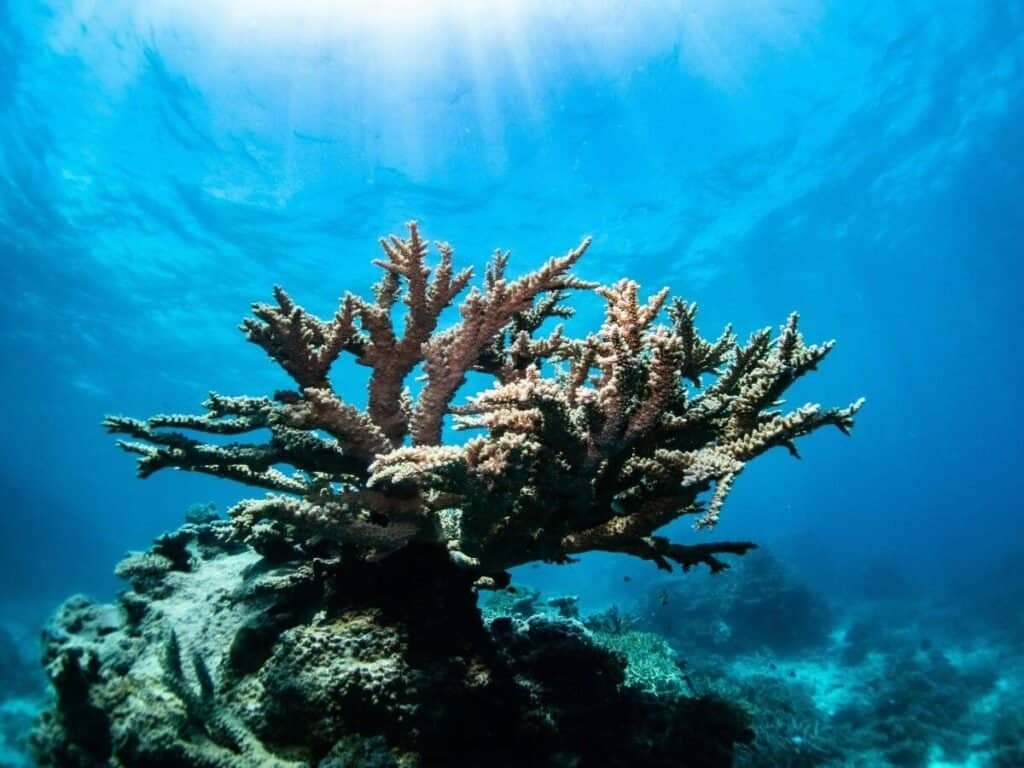
Check out this blog for more things to do in Australia.
How Cold Is Australia In The Winter?
In Melbourne, winter temperatures are typically cool. The average temperatures range from 6.5 – 14.2°C (43.7 – 57.6°F). The coldest month of the year in Melbourne is July, with an average low of 44°F and high of 55°F.
Despite the cool temperatures, it’s worth noting that the average temperature in Melbourne is 10 degrees warmer than Scotland throughout every season of the year.
The Australian Alps range from a nippy 3°C to a mild 12°C, but the minimum average monthly temperature can drop to -7°C.
Is Sydney Cold In Winter?
With average temperatures around 15°C (59°F), in cities like Sydney, the coldest month, July, averages a comfortable 13°C (55°F). And if you’re looking for a little more warmth, head up to Brisbane where winter temperatures range between a mild 9°C (48°F) and a balmy 29°C (84°F).
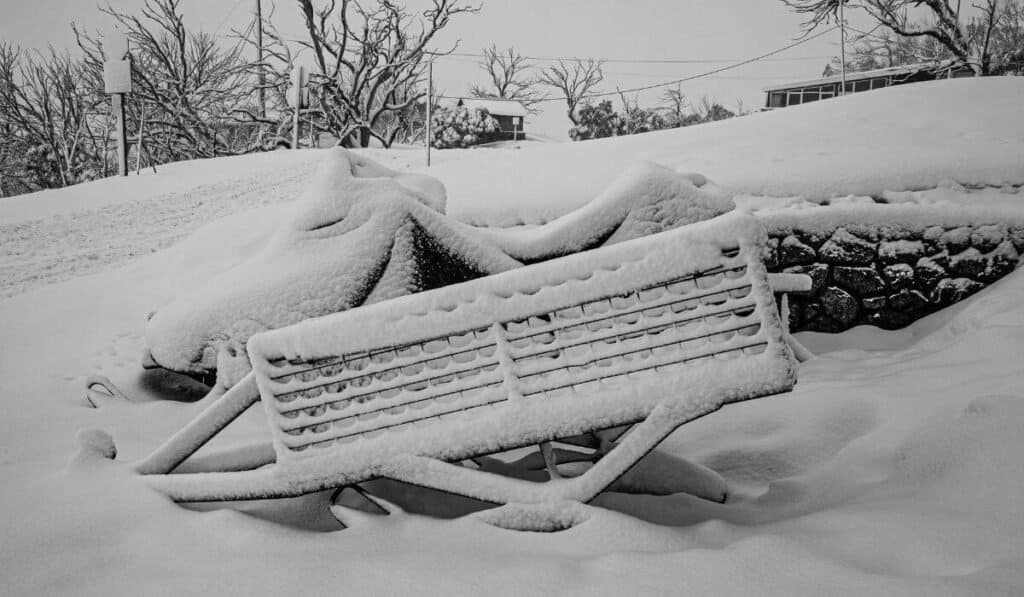
What Is Australia Like During The Winter?
Forget everything you know about winter. In Australia, it’s not all about shovelling snow or scraping ice off your windshield. Instead, think mild temperatures, sunny days, and a whole lot of outdoor fun.
Picture this: You’re strolling along the beach in Sydney, soaking up the winter sun as the temperature hovers around a comfortable 15-26°C (59-79°F). You might even find yourself swapping your winter coat for a light sweater.
Head over to Western Australia during the winter, or “dry” season (April-September), and you’ll enjoy temperatures ranging from a delightful 24°C (75°F).
But let’s not forget our friends who love a good chill. For you frosty folks, some regions can get as cold as -10°C (14°F), while others remain warm and sunny, reaching highs of up to 34°C (93°F). Talk about having the best of both worlds!
And here’s the kicker: even in winter, Australia is teeming with life. Whether you’re exploring the Great Barrier Reef, hiking through lush rainforests, or sipping world-class wines in the Barossa Valley, there’s never a dull moment.
When Is Winter In Australia?
In Australia, winter hits the stage in June and takes a bow in August. So just as the northern hemisphere is digging out their summer shorts, Aussies are pulling on their (not so heavy) winter coats.
The official Australia winter months are June, July, and August, but it can also feel cooler and a bit wintery in the autumn and spring months.
Australia’s winter is relatively mild with less contrast between summer and winter temperatures than in the northern continents. Winters are generally cool with temperatures dropping to as low as 5 degrees Celsius, and there might be some frosty nights. The northern areas in the winter are fine and dry, while the south is cool-cold and more likely to be wet.
Are The Seasons Opposite In Australia?
Due to its location in the Southern Hemisphere, Australia’s seasons are opposite to those of countries in the Northern Hemisphere. As such, Australians experience winter from June to August, a time when most of the world is basking in summer warmth. This means Australians are wrapping up in warmer clothing just as others are donning their swimsuits.
Australia’s vastness contributes to significant regional variations in weather during the winter months. The tropical climate of northern regions like Queensland and the Northern Territory ensures they stay relatively warm even in winter. Conversely, southern areas such as Victoria, New South Wales, and Tasmania, characterised by a temperate climate, experience chilly, and often snowy winters.
Recognising these regional weather differences is crucial when planning a winter visit to Australia. While winter starts around December and goes through February in the Northern Hemisphere, in Australia, this is when they’re baking in the summer sunshine.
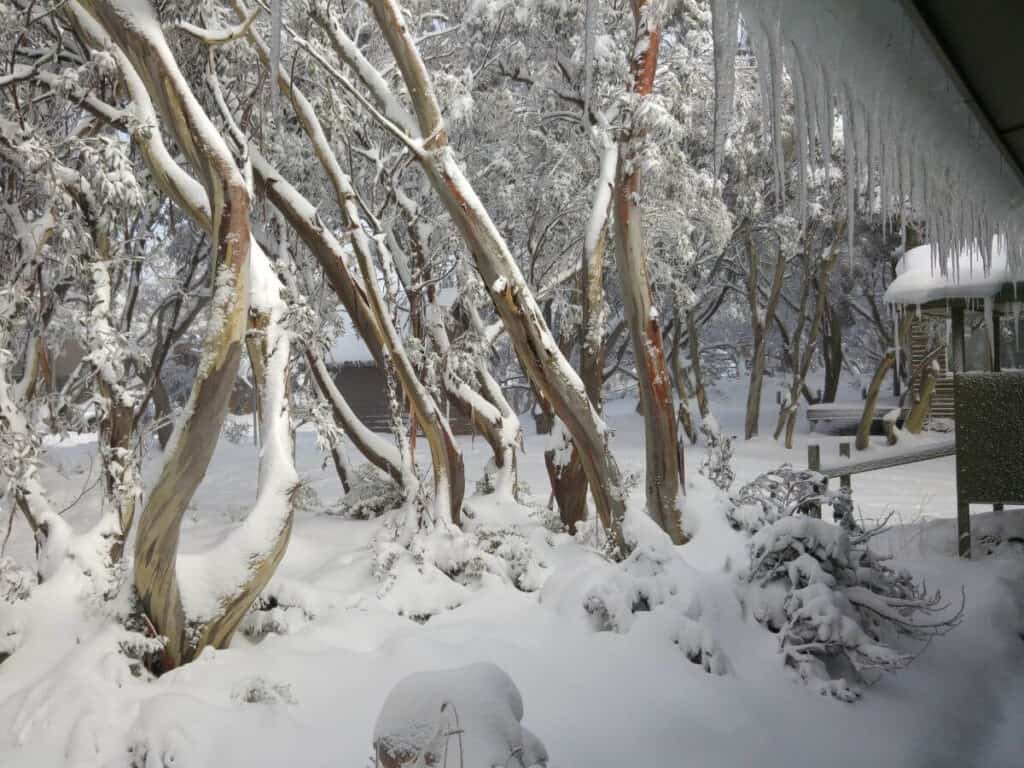
What Is The Coldest Month In Australia?
July is the coldest month in Australia. In Sydney, July brings average temperatures around 11°C (52°F). And over in Melbourne, June and July are the coldest months, with average daytime temperatures hovering around a refreshing 10.9°C (51.6°F) and nighttime temperatures dipping to an invigorating 9.2°C (48.56°F).
July is also prime skiing and snowboarding month in the Australian Alps, even when there hasn’t been a huge amount of snowfall, the temperatures stay chilly enough in some resorts to keep the pistes open with snowmaking.
Where’s The Warmest Place In Australia During Winter?
During winter, the warmest places in Australia are predominantly located in the northern regions. One such location is Kalumburu in Drysdale River National Park, with average July temperatures reaching 38.3°C.
Other warm holiday spots include Port Douglas, Queensland with an average winter temperature of 25°C, Darwin, Northern Territory with an average winter temperature of 32°C, and Broome, Western Australia with an average winter temperature of 30°C.
Marble Bar, Western Australia, is also known for its high temperatures and holds the world record for the most consecutive days of 37.8°C or above. However, Marble Bar’s peak heat is typically in December, not during the Australian winter.
Another popular warm winter destination is Cairns, Queensland, which has an average winter temperature of 26°C.
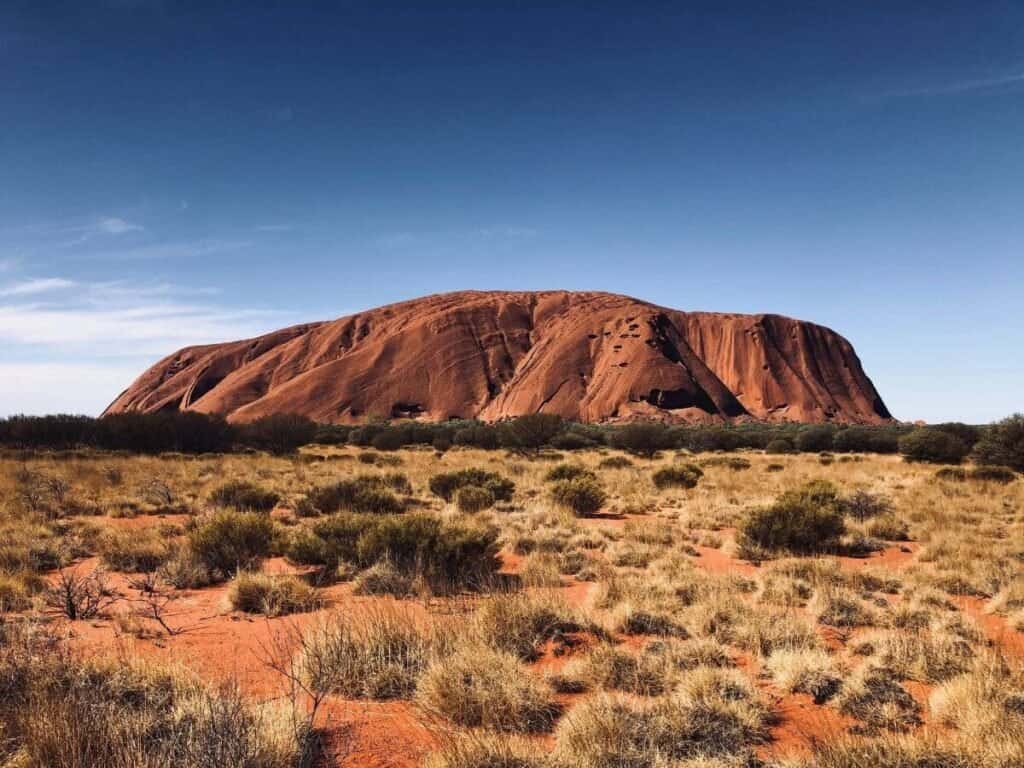
Does It Rain In Winter In Australia?
Rainfall in Australia during winter varies greatly depending on the region.
In general, the southern parts of the country receive more rainfall than the northern parts during winter. For instance, Sydney typically sees its highest rainfall in June, with an average of 132 mm. Melbourne, on the other hand, receives an average rainfall of around 649 mm annually.
In contrast, the northern parts of Australia, such as Darwin in the Northern Territory, have a dry season during the Australian winter and a wet season during the summer.
Helpful Tips For Your Winter Adventure In Australia
As you embark on your winter sojourn, it’s essential to plan for a seamless and joyful trip. Here are some helpful tips to keep in mind:
Accommodation: Book your accommodation in advance, especially in popular winter destinations. Consider cosy cabins, boutique hotels, or even glamping experiences for a touch of adventure.
Transportation: If you’re heading to the snowfields, check for shuttle services or hire a car for flexibility. For longer journeys, consider scenic train routes or domestic flights to reach your destination comfortably.
If you need tips on Living in a Campervan, check out our guide here!
Seasonal Factors: Pack layers of clothing, including thermals and waterproof outerwear. Keep an eye on weather forecasts and road conditions for safe travel.
Events and Festivals: Research local winter events and festivals happening during your visit. From ice skating rinks to snow play areas, these events add an extra touch of magic to your winter experience.
What To Pack For Winter In Australia
Packing for winter in Australia can vary depending on the region you’re visiting as the country spans different climate zones. However, here’s a general list based on the search results:
- Clothing: Pack layers to adjust to changing weather conditions. This includes thermal underwear, warm jackets, jeans, and dressier clothes if you plan on going out. Also, consider packing a scarf, beanie, and gloves to keep you warm during colder days. Waterproof and windproof jackets are also recommended.
- Footwear: Sneakers or comfortable walking shoes are essential. If you’re planning on hiking or outdoor activities, consider packing waterproof boots.
- Accessories: Depending on your activities, you might need a backpack, lighting and batteries, and possibly a sleeping bag if you plan on camping or staying outdoors overnight.
- Beach Essentials: If you’re visiting Queensland or other warmer regions, don’t forget to pack a beach bag, beach towel, and beach coverup.
- Toiletries: A wash bag with essentials like a solid shampoo bar, stick deodorant, and mini toothbrush is recommended. Packing ‘hard’ versions of these items can save space for liquids in your luggage. And don’t forget that all-important SPF!

If you’re looking for tips on how to survive Winter Vanlife, check out our in-depth guide here!
The Wrap-Up | Winter In Australia
Winter in Australia is a secret treasure trove waiting to be discovered. Whether you’re seeking snow-filled adventures or offbeat escapes, this diverse land has something to offer every traveller.
Embrace the magic of winter down under, immerse yourself in unique experiences, and create memories that will warm your heart for years to come. So, bundle up, set off on your winter adventure, and let Australia work its enchantment on you.
